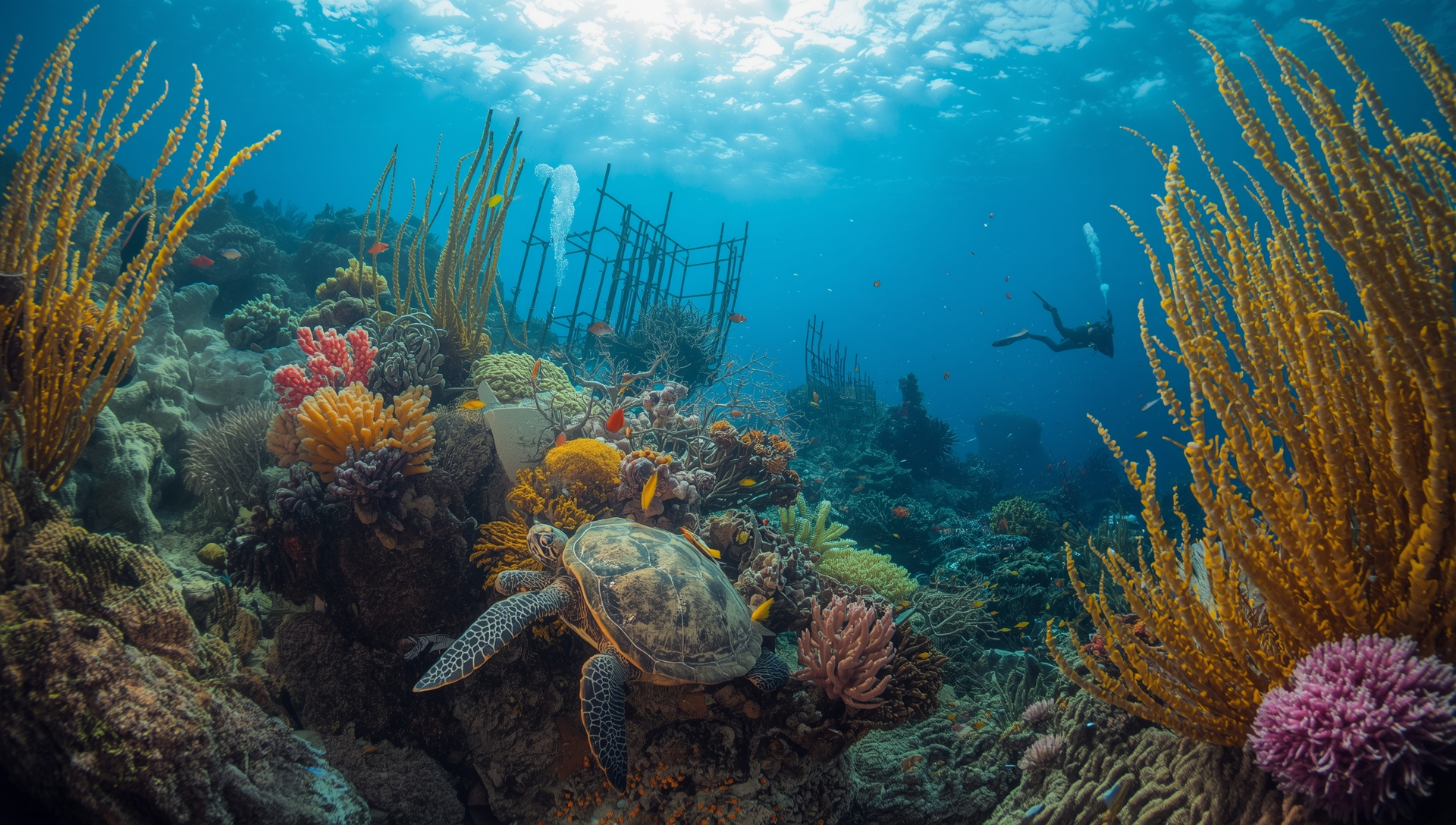
Environment & Sustainability
Dubai Reef: Reviving Marine Life with Artificial Reefs
Launched in April 2024 under the leadership of His Highness Sheikh Hamdan bin Mohammed bin Rashid Al Maktoum, the Dubai Reef project is set to become one of the largest purpose-built artificial reef initiatives anywhere. Led by the Dubai Environment and Climate Change Authority (DECCA) and supported by entities including Dubai’s Department of Economy and Tourism, DP World, Nakheel, and Emirates, the programme is deploying 20,000 reef modules across 600 square kilometres of Gulf waters over three years.
A preceding two year pilot (2021–2023) placed 40 reef modules in UAE waters. These hosted 17 invertebrate species (barnacles, sponges, bivalves) and triggered noticeable increases in 15 fish species. Findings suggested a 10 % rise in marine biodiversity and up to an eightfold boost in fish biomass, offering early signs of ecosystem recovery.
In late 2024, the first full-scale reef module was deployed off Dubai’s coast, designed to last more than 100 years, using recycled concrete and steel to ensure structural stability and habitat value. By mid‑2025, fabrication stood at 39 %, with 3,660 modules already installed. Continued deployment remains on track to complete by 2027.
The reef modules come in diverse designs (Fish Cube, Arab Marine Pyramid, Reef Shade, X‑Reef, Fish Cave, and Ocean Castle) each tailored for different depths (18–25 m+) and species-specific habitat needs. Modules range from 1.5 to 15 tonnes in weight and 1.6 m to 6.5 m height.
Dubai Reef is embedded within broader sustainability goals, aligning with Dubai Can, the city’s D33 economic agenda, the UAE Green Agenda 2030, and several UN SDGs, notably Life Below Water and Climate Action. Beyond marine restoration, the initiative stimulates eco‑tourism, sustainable fishing, carbon capture (projected at over seven million tonnes), and job creation tied to marine and environmental sectors.
Dubai Reef blends scientific insight, visionary planning, and eco‑innovation. It demonstrates how human-engineered structures, thoughtfully designed and strategically deployed, can help restore biodiversity, support local fisheries, and contribute to long‑term ecological resilience. As marine ecosystems face global decline, Dubai’s reef initiative offers a hopeful blueprint for restoration beneath the waves.